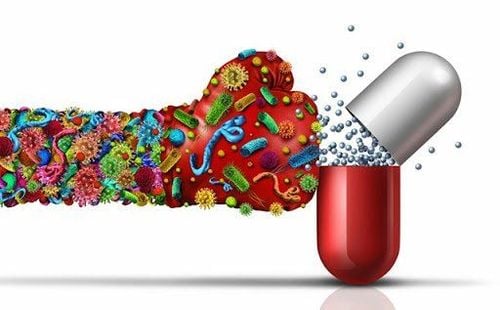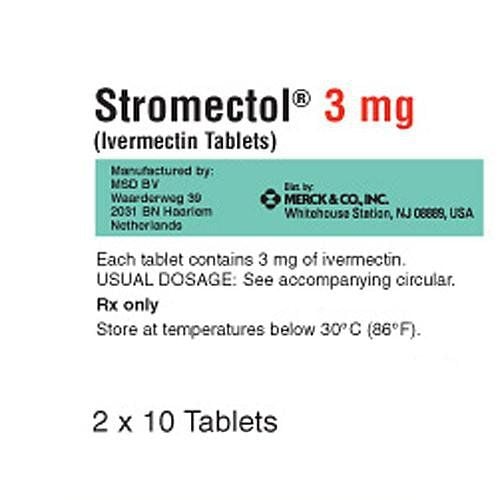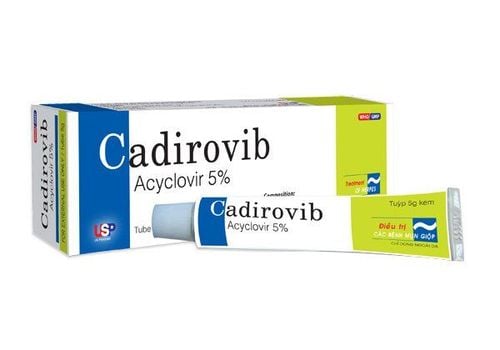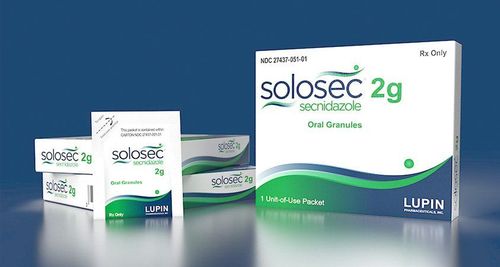This is an automatically translated article.
Raw fish is the main ingredient in popular dishes like poke, sushi and ceviche. These dishes are both easy to make at home and delicious. It is important to note that when you eat raw fish, there is a greater risk of food poisoning or parasitic infections. So is it safe and healthy to eat raw fish? Let us learn more about this issue in the article below.1. Popular raw fish dishes
Raw fish is the main ingredient in many dishes of people around the world. Famous dishes from raw fish include:Sushi: A popular dish in Japan, sushi is characterized by cooked rice, pickled in vinegar and various other ingredients, including raw fish. Sashimi: Another equally famous Japanese dish consists of thinly sliced raw meat or fish. People say Japan without enjoying sushi and sashimi does not mean they have come to Japan. Poke: A traditional Hawaiian salad made with large chunks of raw fish seasoned and mixed with vegetables. Ceviche: A raw seafood dish, including lightly seasoned fish. This dish is popular in Latin American countries. This dish uses lemon or lime juice to cook the fish meat but still retain the fresh taste. Carpaccio: Popular in Italy, carpaccio was originally a dish consisting of thinly sliced or pounded raw beef. The term can also include similar dishes that include other types of raw meat or fish. Koi pla: A specialty dish of some countries in Southeast Asia made from chopped raw Koi fish meat mixed with lemon juice and many other ingredients, including fish sauce, garlic, chili, herbs and vegetables. Marinated herring: Raw herring is marinated popularly in the Netherlands with the typical spices of this country Gravlax: A dish originating from the Nordic region made from raw salmon marinated with sugar and salt and dill. This is a traditional dish of the people of some Nordic countries, it is eaten with mustard sauce. These dishes are an important part of food culture around the world.

Cá sống là nguyên liệu chính trong nhiều món ăn của người dân khắp nơi trên thế giới
2. Parasitic infection from raw fish
Parasites are plants or animals that parasitize other living things, called hosts, without providing any benefit. While some parasites do not cause any obvious acute symptoms, many can cause serious long-term harm. Parasitic infections in humans are a major health concern in many countries in tropical climates. Many of them get the parasite through contaminated drinking water or improperly cooked food, including raw fish. However, people in these countries can still reduce their risk by purchasing raw fish from trusted restaurants or suppliers that have handled and prepared it properly.Here is an overview of some of the main parasitic diseases that can be transmitted to humans after eating raw or undercooked fish:
2.1. Liver flukes Liver flukes are a family of parasitic flatworms that cause a disease called fascioliasis. It is the most common parasitic infection in tropical regions of Asia, Africa, South America and Eastern Europe. Researchers estimate that around 17 million people worldwide, mostly in Southeast Asia, are affected by fascioliasis. Adult liver flukes reside in the livers of infected humans and other mammals, where they consume human blood for food. They can cause an enlarged liver, bile duct infections, cholecystitis, gallstones, and liver cancer. The main cause of fascioliasis is believed to be mainly from eating raw or improperly cooked fish. Unwashed hands and dirty food preparation surfaces and kitchen utensils also play a role in the transmission of this parasite.
2.2. Tapeworms Fish tapeworms are transmitted to people who eat raw or undercooked freshwater fish or marine fish that spawn in freshwater rivers, including salmon. They are the largest known parasite that can infect humans, even reaching a length of up to 15 meters. Scientists estimate that up to 20 million people may be infected with fish tapeworms worldwide. Although fish tapeworms usually don't cause specific symptoms, they can cause an illness known as diphyllobothriasis. Symptoms of diphyllobothriasis are usually mild and include fatigue, upset stomach, diarrhea, or constipation. Tapeworms can also steal significant amounts of nutrients from the host's intestines, especially vitamin B12. This may contribute to vitamin B12 deficiency or deficiency in humans.
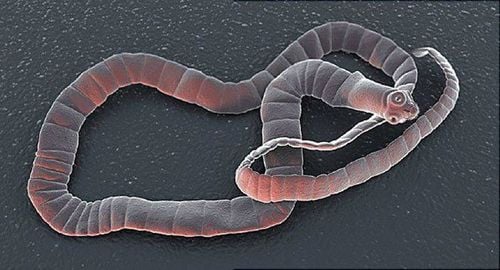
Sán dây cá lây nhiễm sang người lây bệnh diphyllobothriasis
Unlike many other fish-borne parasites, Anisakis roundworm cannot live in the human body for too long. When they enter the body, they will try to dig deep into the intestinal wall, where they become trapped and eventually die. This can cause a severe immune response that leads to inflammation, stomach pain, and vomiting. Anisakiasis can also cause immune responses even when the worms have died from eating fish.
Another family of parasitic roundworms can cause a disease called gnathostomiasis. These worms are found in raw or undercooked fish, poultry and frog meat in Southeast Asia, Latin America, India and South Africa. However, it is very rare to have gnathostomiasis infections outside of Asia. The main symptoms of the disease are stomach pain, vomiting, loss of appetite and fever. In some cases, it can cause skin damage, rash, itching, and swelling. Depending on where in the host's body the parasite larvae migrate, the infection can cause serious problems in different organs.
2.4. Bacterial contamination Another reason fish needs to be cooked before eating is the risk of food poisoning. The main symptoms of food poisoning include abdominal pain, nausea, vomiting, and diarrhea. Potentially harmful bacteria detected in raw fish include Listeria, Vibrio, Clostridium and Salmonella. A study in the US found that about 10% of imported raw seafood and 3% of domestic live seafood tested positive for Salmonella. However, for healthy people, the risk of food poisoning from eating raw fish is generally low. People with weakened immune systems, such as the elderly, young children and HIV patients, are more susceptible to infections. These high-risk groups should avoid raw meat and fish. In addition, pregnant women are generally advised not to eat raw fish due to the risk of Listeria infection, which can cause fetal death. Currently, according to a report by the US Centers for Disease Control, about 12 out of every 100,000 pregnant women are infected with this bacterium.
In addition, raw fish may contain higher amounts of pollutants. Persistent organic pollutants (POPs) are toxic, industrially produced chemicals, such as polychlorinated biphenyls (PCBs) and polybrominated diphenyl esters (PBDEs). Fish are known to accumulate persistent organic pollutants, especially farmed fish, such as salmon. The main culprit for this is using contaminated fish feed. High intake of these pollutants has been linked to chronic diseases including cancer and type 2 diabetes. One study found that the amount of persistent organic pollutants in cooked salmon was about 26% less than in raw salmon of the same type.
Another study found that the amount of bioaccessible mercury in cooked fish was 50-60% lower than in raw fish. How this works is not entirely clear, but appears to be related to the loss of fat during cooking of the fish. While cooking fish can be effective in reducing mercury levels, it may not work for other contaminants.

Các kim loại nặng độc hại có trong cá sống cũng là mối nguy hiểm cần được quan tâm
3. Is it safe and healthy to eat raw fish?
Eating raw fish has some better health benefits than eating cooked fish:First, raw fish does not contain the toxic substances that form when fish is fried or grilled. For example, fish cooked under high heat can contain varying amounts of heterocyclic amines. Observational studies suggest that high consumption of heterocyclic amines may lead to an increased risk of cancer.
Second, frying fish can reduce your intake of healthy omega-3 fatty acids, like eicosapentaenoic acid (EPA) and docosahexaenoic acid (DHA). In short, several aspects related to the nutritional quality of fish can be impaired when the fish is cooked. In addition, there are other benefits to eating raw fish that have been processed cleanly, ensuring no harm to health, that is, not having to cook to save time and enjoying raw fish dishes helps maintain the health of the fish. cultural diversity.
4. Minimize the risks when eating raw fish
If you like the taste and texture of raw fish, there are a few ways you can reduce your risk of parasites and bacterial infections:Eat only raw fish that has been frozen: Freeze fish for one week at - 20 °C, or for 15 hours at - 35 °C, is an effective method of killing parasites. But keep in mind that some household freezers may not be cold enough. Inspecting fish: Visually inspecting fish before eating is also helpful, but may not be sufficient because many parasites are difficult to detect. Buy fish from reputable suppliers or stores: Make sure fish is purchased from trusted restaurants or fish suppliers that have been stored and handled properly. Buy fish in the fridge: Buy only fish that has been refrigerated or served under a thick layer of ice. Make sure the fish smells fresh: Don't eat fish that smells sour or too fishy. Don't keep fish fresh for too long: If not freezing fish, keep fish in the refrigerator and eat within a few days of purchase. Do not leave fish for too long: Do not leave fish at room temperature for more than an hour or two. Bacteria multiply rapidly at room temperature. Wash your hands: Wash your hands thoroughly after handling raw fish to avoid contaminating the food you prepare afterwards. Clean the kitchen and utensils: Kitchen utensils and food preparation surfaces also need to be cleaned properly to avoid cross-contamination. Although freezing doesn't kill all bacteria, it will stop their growth and possibly reduce the number of disease-causing bacteria. Although marinating fish, brine, or cold smoking can reduce the number of parasites and bacteria they contain, these methods are not completely reliable for preventing disease.

Rửa tay sạch sau khi xử lý cá sống để tránh làm ô nhiễm thực phẩm mà bạn chế biến sau đó
Please dial HOTLINE for more information or register for an appointment HERE. Download MyVinmec app to make appointments faster and to manage your bookings easily.
References: healthline.com, smarternutrition.com



